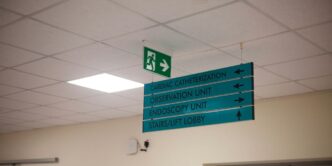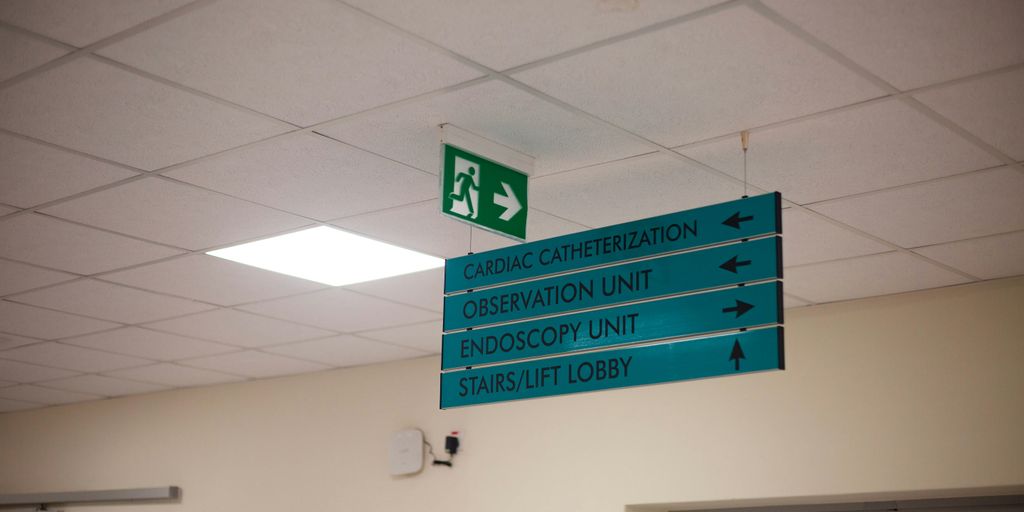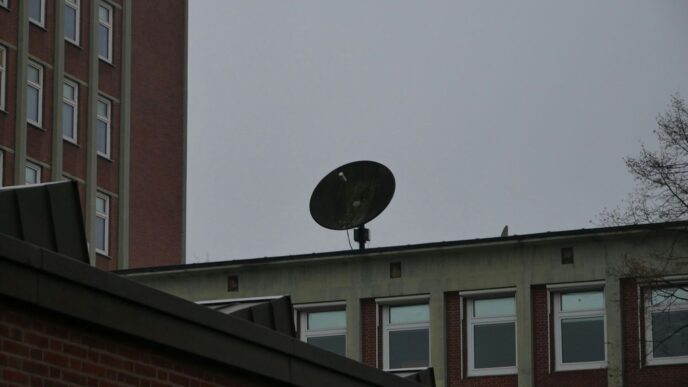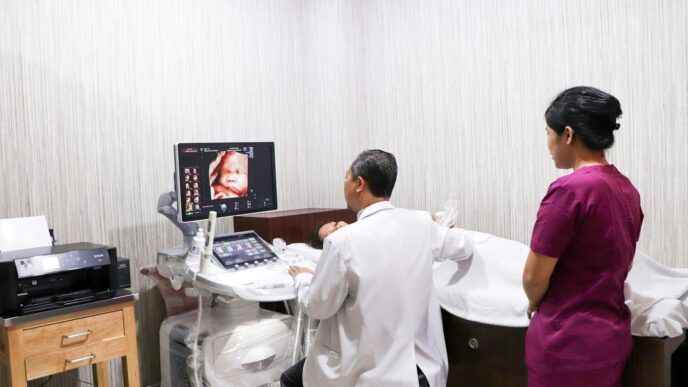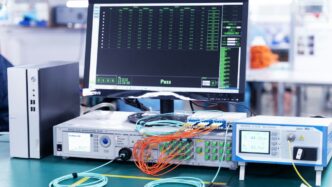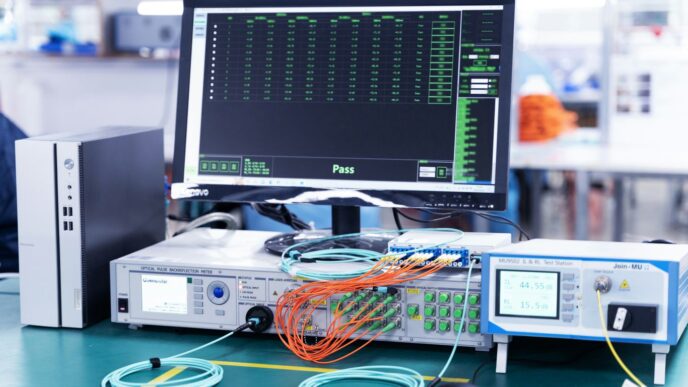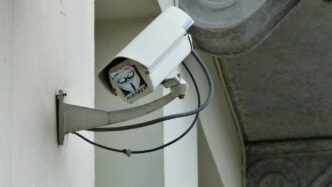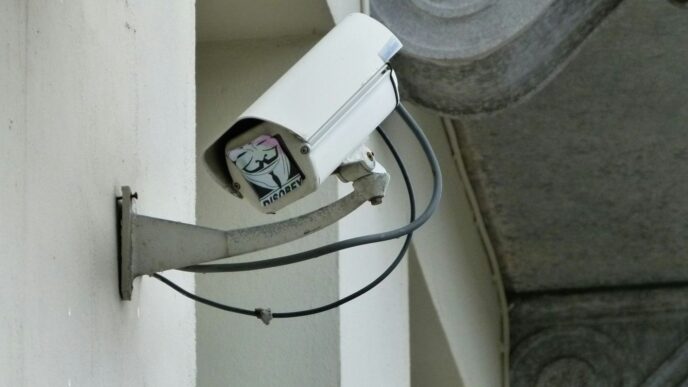Hospitals and other medical places face a lot of security problems these days. It’s not just about keeping bad guys out; it’s also about making sure patients are safe, protecting private information, and keeping staff secure. Old security methods just don’t cut it anymore. We need smart access control hospital systems that can handle all these new challenges. This guide will go over the best ways to keep medical facilities safe, what new security trends are popping up, and what to think about when putting strong security in place.
Key Takeaways
- Healthcare places have more and more security problems, like people getting in who shouldn’t, patient safety worries, violence at work, and rule breaking.
- You need a security plan with many layers. This means using access control hospital systems, smart cameras, visitor rules, and emergency plans all together.
- It’s important to stop people from getting into sensitive spots like operating rooms or medicine storage by setting up who can go where.
- Visitor and contractor systems help a lot. They check who people are, give out temporary passes, and keep digital records of everyone who comes in.
- Smart camera systems make security stronger. They can recognize faces and notice strange behavior, then automatically react to threats.
Understanding Security Challenges in Healthcare Facilities
Healthcare facilities are tricky places when it comes to security. You’ve got a lot of people coming and going, sensitive information all over the place, and a real need to balance keeping things secure with making sure people can actually get the care they need. It’s a tough balancing act, and things can get complicated fast. Let’s look at some of the big challenges.
Addressing Unauthorized Access in Hospitals
Hospitals need to control who goes where, and when. It sounds simple, but it’s not. You’ve got staff, patients, visitors, contractors… all needing different levels of access. If someone gets into an area they shouldn’t, it could compromise patient safety, expose sensitive data, or even lead to theft. Think about operating rooms, pharmacies, or record storage – you can’t just let anyone wander in. healthcare IT integration is key to managing this.
Mitigating Workplace Violence in Healthcare
Sadly, violence against healthcare workers is a real problem. Doctors, nurses, and other staff can face aggression from patients or visitors, and hospitals need to take steps to protect them. This isn’t just about physical safety, either; it’s about creating a safe and supportive environment where people can do their jobs without fear. Things like better training, security personnel, and clear protocols for handling aggressive behavior can make a big difference.
Combating Theft of Pharmaceuticals and Medical Equipment
Drugs and medical equipment are valuable, and that makes them targets for theft. Hospitals need to secure drug storage areas and keep track of expensive equipment to prevent losses. This isn’t just about the money, either; stolen medications can end up on the street, and stolen equipment can compromise patient care. Think about it – if a vital piece of equipment goes missing, it could delay treatment or even put lives at risk. Here are some common items that are stolen:
- Medications (especially controlled substances)
- Laptops and tablets
- Small medical devices (e.g., otoscopes, ophthalmoscopes)
- Personal protective equipment (PPE)
Protecting Against Cyber-Physical Threats
Hospitals rely more and more on digital systems, and that opens them up to cyberattacks. Hackers could try to break into access control systems, steal patient data, or even disrupt critical services. It’s not just about computers, either; think about all the connected medical devices in a hospital. If someone can hack into those, they could potentially harm patients. A strong cybersecurity strategy is essential, including things like firewalls, intrusion detection systems, and regular security audits.
Key Components of a Best-in-Class Access Control Hospital System
Credential-Based Authentication and Multi-Factor Verification
Okay, so first up, you absolutely need solid ways to check who’s going where. Credential-based authentication is the foundation. Think RFID cards, biometrics (fingerprint or facial recognition), and even mobile credentials. But here’s the thing: just one layer isn’t enough anymore. That’s where multi-factor verification comes in. It’s like adding extra locks to your door. For example, someone might need to scan their card and use a fingerprint to get into the pharmacy. It’s a pain for the bad guys, but keeps the drugs safe. You can even use cloud door access software to manage all of this remotely.
Advanced Visitor and Contractor Management
Visitors and contractors are a huge security risk if you don’t manage them right. You need a system to verify their identities, issue temporary credentials, and track where they go. Digital visitor logs are a must for audits and investigations. It’s not just about knowing who is in the building, but why and where. Think about it: a contractor wandering around sensitive areas? No thanks. A good system will help prevent that. Here’s a quick breakdown:
- Pre-registration: Allows visitors to register ahead of time, streamlining the check-in process.
- Background checks: Integrate with databases to screen contractors before they even step foot on the property.
- Real-time tracking: Know exactly where visitors and contractors are at all times.
AI-Powered Video Surveillance Integration
Video cameras are everywhere, but they’re only useful if you’re actually watching the footage. That’s where AI comes in. AI-powered video surveillance can monitor high-risk areas like emergency rooms, entrances, and parking lots. It can do things like facial recognition and behavior anomaly detection to spot potential threats before they become problems. Plus, you can integrate it with your access control system so that if a breach is detected, the system automatically restricts access. It’s like having a super-smart security guard that never sleeps. It’s all about Avigilon Alta and how it can help keep things secure.
Implementing a Comprehensive Access Control Hospital Security Strategy
Okay, so you want to seriously level up your hospital’s security? It’s not just about slapping on a few cameras and calling it a day. It’s about building a real, thought-out strategy. Here’s how to get started:
Conducting Hospital-Wide Security Risk Assessments
First things first, you gotta know what you’re up against. Walk around, take notes, and figure out where the weak spots are. A thorough security risk assessment is the foundation of any good security plan. Think about things like:
- Are the entrances secure? Can anyone just walk in?
- What about the pharmacy? Is it Fort Knox, or could someone easily grab meds?
- How’s the data security? Could a hacker get into patient records?
Basically, you’re trying to find all the ways someone could mess things up. Once you know the risks, you can actually do something about them. This is where big data can help you identify patterns and vulnerabilities you might otherwise miss.
Establishing Role-Based Access Control Policies
Not everyone needs to go everywhere. A janitor doesn’t need access to the operating room, and a nurse doesn’t need to be in the CEO’s office. That’s where role-based access control (RBAC) comes in. You set up rules that say who can go where, and when. For example:
- Doctors get access to patient records and operating rooms.
- Nurses get access to patient records and medication rooms.
- IT staff gets access to server rooms and network equipment.
It sounds simple, but it makes a huge difference. It’s all about limiting access to only those who need it. This is a key component of a robust healthcare security system.
Developing a Scalable and Unified Security Ecosystem
You don’t want a bunch of different security systems that don’t talk to each other. That’s a recipe for disaster. You need a unified system that can grow with your hospital. Think about it like this:
- Access control should integrate with video surveillance.
- Visitor management should tie into the access control system.
- Everything should be managed from a single platform.
That way, if something happens, you can see the whole picture and react quickly. Plus, it makes it way easier to manage everything in the long run. This approach helps in physical security and access control, ensuring a safer environment for everyone.
Ensuring Compliance and Regulatory Adherence in Access Control Hospital Systems
Navigating HIPAA and GDPR Data Privacy Regulations
Okay, so when we talk about access control in hospitals, it’s not just about keeping people out. A huge part of it is making sure we’re following all the rules about patient data. HIPAA in the US and GDPR in Europe (and elsewhere) set the standard for how patient information is handled. It’s about restricting who can see medical records and making sure only authorized people get access to sensitive info. Think of it like this: you wouldn’t want just anyone reading your personal medical history, right? So, hospitals need systems that track who accesses what and when, creating a clear audit trail. This helps them stay compliant and avoid hefty fines. It’s a big deal, and it’s only getting more important as data breaches become more common. For example, hospitals might use encrypted access logs to protect patient data.
Complying with Workplace Safety Standards
Beyond patient data, there are also rules about keeping the workplace safe for hospital staff. Things like OSHA regulations come into play here. These standards are there to prevent violence and make sure employees are safe. Access control systems can help with this by limiting access to certain areas, especially those that might be high-risk. It’s about creating a secure environment where staff can do their jobs without feeling threatened. This might involve things like secure entry points and visitor management protocols. It’s all part of creating a culture of safety within the hospital.
Meeting Local and National Healthcare Security Standards
On top of HIPAA, GDPR, and OSHA, there are also local and national healthcare security standards that hospitals need to meet. These standards often dictate specific access control requirements, like secure entry points, visitor management, and regular security audits. Think of it as a layered approach to security. Each layer adds another level of protection, making it harder for unauthorized people to gain access. Compliance with these regulations is super important to avoid legal problems and, more importantly, to protect patients and staff from security risks. It’s not just about ticking boxes; it’s about creating a safe and secure environment for everyone.
The Future of Access Control Hospital Security: Emerging Trends and Innovations

Leveraging AI-Powered Security Monitoring and Predictive Analytics
Okay, so picture this: hospitals are starting to use AI to watch everything. Not in a creepy way, but in a super helpful, "let’s catch problems before they happen" kind of way. AI-powered security monitoring blockchain technology can analyze video feeds, access logs, and all sorts of data to spot weird patterns. Like, if someone’s trying to get into a restricted area at 3 AM, the system flags it before they actually break in. It’s like having a super-smart security guard who never sleeps. Plus, it gets better over time as it learns what’s normal and what’s not.
Integrating IoT with Healthcare Access Control Systems
IoT (Internet of Things) is becoming a big deal in hospitals. Think about all the connected devices: medical equipment, smart beds, even the coffee machine in the break room. Now, imagine linking all that to the access control system. For example, if a piece of expensive equipment is moved without authorization, the system can automatically lock down the nearest exits. Or, if a patient with specific needs enters a certain area, the system can alert the staff. It’s all about creating a smarter, more responsive environment. But, of course, this also means we need to be extra careful about network security to prevent hackers from messing with things.
Adopting Mobile Credentialing for Enhanced Convenience and Security
Remember those old-school ID badges? They’re going away. Now, hospitals are switching to mobile credentialing. Basically, your smartphone becomes your key. It’s way more convenient because everyone has their phone with them anyway. Plus, it’s more secure. If someone loses their phone, you can remotely wipe the credentials. And, you can use things like fingerprint or facial recognition to make sure it’s really you. It’s a win-win. Here’s a quick comparison:
| Feature | Traditional Badges | Mobile Credentials |
|---|---|---|
| Convenience | Low | High |
| Security | Medium | High |
| Replacement Cost | Medium | Low |
| Tracking | Limited | Advanced |
Mobile credentialing is the future, and it’s making hospitals safer and easier to manage. It’s not just about convenience; it’s about access control that adapts to the way we live now.
Advanced Access Control Features for Hospital Security
Securing Restricted Areas with Door Interlocking and Anti-Passback
Okay, so think about those super-sensitive areas in a hospital – pharmacies, research labs, places with really important stuff. You can’t just let anyone wander in, right? That’s where door interlocking and anti-passback systems come in super handy. Door interlocking means that only one door in a series can be open at a time. It’s like an airlock. Anti-passback? That prevents someone from using a credential to enter, then handing it off to someone else to use. It makes sure only authorized people are getting in, and only once.
Implementing Two-Factor Authentication for Critical Zones
Two-factor authentication (2FA) isn’t just for your email anymore. It’s a must-have for hospital areas where security is paramount. We’re talking operating rooms, data centers, anywhere with sensitive patient info. 2FA means you need more than just a keycard or password. Think biometrics – fingerprint scans, facial recognition – paired with something else, like a PIN. It adds a serious layer of protection. If someone steals a keycard, they still can’t get in without that second factor. It’s like having a super secure lock on top of another secure lock. It really helps with healthcare security.
Utilizing Dual Custody for High-Risk Access Control
For the highest-risk areas, like where controlled substances are stored, dual custody is the way to go. This means that two authorized people are required to be present to unlock the area. Neither person can enter alone; both keys or codes are needed. It’s a safeguard against internal theft or misuse. It’s a bit more of a hassle, sure, but the added security is worth it when you’re dealing with things that could cause serious harm if they fell into the wrong hands. It’s all about access control hospital systems and making sure everything is safe and sound.
Optimizing Patient Safety Through Integrated Access Control Hospital Solutions
Protecting Sensitive Patient Data with Encrypted Access Logs
Okay, so think about it: hospitals are treasure troves of personal information. We’re talking addresses, medical histories, billing info – the works. If that stuff gets into the wrong hands, it’s a disaster. That’s where encrypted access logs come in. They’re like super-secure diaries that record who accessed what, when, and from where. This makes it way harder for unauthorized people to snoop around and steal data. Plus, if something does happen, these logs are super helpful for figuring out what went wrong and who was involved. It’s all about keeping that patient data safe.
Securing IoT-Enabled Medical Devices
These days, everything’s connected to the internet, even medical devices. That’s cool because it lets doctors monitor patients remotely and get real-time data. But it also means that these devices are vulnerable to hackers. Imagine someone hacking into an insulin pump or a heart monitor – scary, right? Access control systems can help by making sure that only authorized people and systems can access these devices. It’s like putting a lock on every device to keep the bad guys out. Here’s a few things to consider:
- Device Authentication: Making sure every device is who it says it is.
- Network Segmentation: Separating medical device networks from other networks.
- Regular Updates: Keeping the software on these devices up to date to patch security holes.
Enhancing Emergency Response and Crisis Management Protocols
When something goes wrong in a hospital – a fire, a shooting, a natural disaster – every second counts. Access control systems can play a big role in helping people respond quickly and effectively. For example, they can automatically lock down certain areas to prevent people from entering or leaving. They can also be integrated with mass notification systems to alert staff and patients about the emergency. And they can help first responders get to where they need to go quickly. It’s all about having a plan in place and using technology to make sure everyone stays safe. Here’s a few things that can be done:
- Automated Lockdowns: Quickly securing areas during emergencies.
- Real-Time Tracking: Knowing where staff and patients are located.
- Integration with First Responders: Giving them access to the building and systems during a crisis.
Wrapping Things Up
So, what’s the big takeaway here? Basically, making hospitals safer isn’t just about putting up a few cameras anymore. It’s about really thinking through how people move around, who gets to go where, and how we can use smart tech to keep everyone safe. When hospitals get serious about modern access control systems, they’re not just following rules; they’re making sure patients get the best care in a place that feels secure. It’s a win-win, really. And honestly, it just makes sense to invest in that kind of peace of mind.
Frequently Asked Questions
What are the main security issues hospitals deal with?
Hospitals face many security problems, like people getting into places they shouldn’t, violence against staff, stealing medicines and equipment, and computer attacks that can mess with physical systems.
What makes a hospital security system really good?
A top-notch security system for hospitals uses things like special cards or fingerprints to let people in, smart ways to manage visitors, and cameras that use AI to watch over things.
How can hospitals put a strong security plan into action?
To set up a strong security plan, hospitals need to check for weak spots, decide who can go where based on their job, and build a security system that can grow and work together.
What rules and laws do hospitals need to follow for security?
Hospitals must follow strict rules like HIPAA and GDPR to keep patient information private. They also need to meet safety rules for workers and follow local and national security guidelines.
What new things are coming in hospital security?
The future of hospital security includes using AI to predict problems, connecting security systems with medical devices, and using cell phones instead of key cards to get around.
What advanced security features are used in hospitals?
Special security features include doors that only open one at a time, systems that stop people from sharing their access cards, and requiring two people to open high-security areas.

